Title search results
Showing 1 - 20 of 23 items

You are the first kid on Mars
By Patrick O'Brien. 2009
Describes a future trip that a child might take to Mars: taking a space elevator to a space station, traveling…
in a rocket, wearing a space suit, and learning about the scientific search for Martian life. Discusses the Mars environment and a habitat created for humans. For grades 2-4. 2009
A is for astronaut: blasting through the alphabet
By Scott Brundage, Clayton C. Anderson, Michael Gillick. 2018
A to Z on topics that cover the history of NASA, science, and aspects of being an astronaut. Uses fun…
poems for each letter paired with longer text in the sidebars. For grades K-3. 2018
Super Cool Space Facts: A Fun, Fact-Filled Space Book for Kids
By Bruce Betts. 2019
Discover a universe of fun and amazing facts about space! Take an exciting, fact-filled journey that goes where all great…
space books for kids should - to our solar system and beyond! Super Cool Space Facts is bursting with info about stormy planets, exploding stars, weird black holes, amazing landers, and more. Blast past other space books for kids with: Galaxies of wonder - Launch into learning with awesome and easy-to-digest facts about everything from asteroids hurtling through space to astronauts on the International Space Station. Entertaining information - Fill your outer space adventure with the jokes, big word alerts, and fascinating mysteries of the universe all space books for kids should have. Super Cool Space Facts brings you out-of-this-world fun - and a must-have title for anyone interested in space books for kids.
Journey Around the Sun: The Story of Halley's Comet
By James Gladstone, Yaara Eshet. 2021

A hundred billion trillion stars
By Isabel Greenberg, Seth Fishman. 2017

My journey to the stars (Step into Reading)
By Scott Kelly, André Ceolin. 2019
NASA astronaut Scott Kelly was the first to spend an entire year in space! Discover his awe-inspiring journey in this…
fascinating picture book memoir (the perfect companion to his adult book Endurance) that takes readers from Scott's childhood as an average student to his record-breaking year among the stars. For grades K-3
To burp or not to burp: a guide to your body in space (Dr. Dave Astronaut #1)
By Dave Williams, Loredana Cunti. 2016
An examination of how the human body behaves in microgravity, answering questions about topics such as how astronauts go to…
the bathroom, why they grow taller, and why burping is risky in space. For grades 2-4. 2016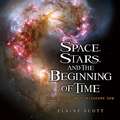
Space, stars, and the beginning of time: what the Hubble telescope saw
By Elaine Scott. 2011
Recounts discoveries about the universe--seeing a star being born, tracking a galaxy light-years away, verifying the existence of dark energy--made…
since 1990 by scientists using the Hubble telescope. Discusses the 2009 mission to update Hubble so it could continue probing the mysteries of the cosmos. For grades 4-7. 2011
Mi’kmaw Moons: The Seasons in Mi'kma'ki
By Cathy LeBlanc, David Chapman. 2022

Searching Beyond the Stars: Seven Women in Science Take On Space's Biggest Questions
By Nicole Mortillaro. 2022
Are we alone in the cosmos? Could we one day live on a different planet? How is life formed? What…
other secrets does the universe hold? Through profiles of seven remarkable women scientists and their achievements in their respective fields, Searching Beyond the Stars takes us deep into space, looking at once to the distant past and the distant future to capture the awe and intrigue of some of the biggest questions we can possibly ask.Making connections across astronomy, chemistry, physics, history, and more, Nicole Mortillaro draws on her own experience as a woman in STEM to highlight the incredible odds each scientist faces while chasing new discoveries and the ways in which sexism and racism, among other barriers, still affect women scientists to this day. Sidebars filled with fascinating facts take readers behind the science and encourage them to delve deeper. Vibrant illustrations by Amanda Key showcase the wonder of space and the passion and eternal curiosity that drive each scientist in their work unfurling the mysteries of our universe.Scientists ProfiledKatherine Johnson, research mathematician and aerospace technologist at NASA. Helped get the first American astronauts into space and safely home again. Lived in Newport News, Virgina.Jill Tarter, radio astronomer and project scientist at NASA. Opened up possibilities for communicating with aliens. Lives in Berkeley, California.Sara Seager, astrophysicist and planetary scientist. Credited with laying the foundation for the field of exoplanet atmospheres and the search for life on exoplanets. Originally from Toronto, Ontario, Sara now lives in Massachusetts.Emily Lakdawalla, planetary scientist, journalist, speaker, and expert science communicator formerly of The Planetary Society. Lives in Los Angeles, California.Tanya Harrison, planetary scientist and geologist. Was on the science operations team for NASA’s Mars Reconnaissance Orbiter analyzing imaging from a geologist’s standpoint to see whether we might one day live on Mars. Director of Science Strategy at Planet Labs. Lives in Washington, D.C.Renée Hložek, astrophysicist and cosmologist. Her work is to imagine, dream, and calculate the mathematical equations that govern and predict the end of the universe. Originally from South Africa, Renée now lives in Toronto, Ontario.Ashley Walker, astrochemist, science communicator, and activist. Co-organizer of #BlackinChem, #BlackInAstro, and #BlackInPhysics to highlight and amplify the voices of Black researchers and scholars in these fields. Lives in Chicago, Illinois.*A Junior Library Guild Gold Standard Selection
Counting the stars: The Story of Katherine Johnson, NASA Mathematician
By Lesa Cline-Ransome, Raúl Ón. 2019
Before John Glenn orbited the Earth or astronauts walked on the moon, a group of dedicated female mathematicians known as…
"human computers" used their knowledge, pencils, adding machines, and writing paper to calculate the orbital mechanics needed to launch spacecraft. Katherine Johnson was one of these mathematicians who used trajectories and complex equations to chart the space program. Even as Virginia's Jim Crow laws were in place in the early 1950s, Katherine worked analyzing data at the NACA (later NASA) Langley laboratory. For grades 2-4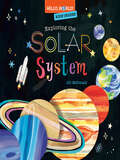
Exploring the solar system (Hello, World!)
By Jill McDonald. 2022
The best-selling Hello, World! board book series expands into picture books, for Hello, World! kids who are ready for the…
next step. Kids who enjoy looking up at space and dreaming of exploring the solar system will love this lively, fact-filled tour of our galaxy, with engaging information: • Fascinating details about each of the planets, including up-to-date information such as NASA's Perseverance rover and Ingenuity helicopter. • Statistics about each planet, with information about the planet's size, distance from the sun, length of days and years, and more. • A question that asks the listener to think about the planets in relation to themselves, such as "Would you like to live on a planet with a long winter or a short winter?" and "What would you bring on your Mars rover?" Hello, World! readers who have moved up to picture books and any kids who love science and space will find many captivating hours of learning and inspiration in the launch of this exciting new series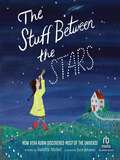
The stuff between the stars: How vera rubin discovered most of the universe
By Sandra Nickel. 2024
Before Vera Rubin discovered most of the universe, she was a girl who loved the night sky. She watched the…
Big Dipper circle the North Star. And when her eyelids grew heavy, she dreamed not about what she had seen, but about what she had not seen. She dreamed about the mysteries between the stars. As Vera grew older, she tried to uncover those mysteries. At her first conference, the male astronomers said her ideas were "outlandish." They said they were "ridiculous." Vera didn't like their harsh words, pushing her away. So she started studying faraway galaxies no one else was interested in. The youngest wheeled like pinwheels. The oldest spun with their arms closed tight. And every single one showed that between the stars, there is stuff we cannot see. Scientists before Vera had suspected this "dark matter" made up most of the universe. But no one had been able to show it was there. No one, until Vera. The Stuff Between the Stars tells Vera's incredible story, celebrates her brilliance, and shows how a girl's never-ending love for the night sky changed the way we see our universe today
Who Was Sally Ride? (Who was?)
By Megan Stine. 2013
In 1978, Sally Ride, a PhD candidate at Standford University, responded to a newspaper ad to join the US astronaut…
program. She was accepted and became the first American woman astronaut to fly in space! Among her other accomplishments, she played tennis like a professional, was an astrophysicist who helped develop a robotic arm for space shuttles, and later, through Sally Ride Science, worked to make science cool and accessible for girls. Sally Ride, who died on July 23, 2012, will continue to inspire young children.
Hello, World! Solar System (Hello, World!)
By Jill Mcdonald. 2016
Now even the youngest children can enjoy learning about the world around them. Hello, World! is a new series designed…
to help parents introduce simple nonfiction concepts to their babies and toddlers. Narrated in simple terms and featuring bright, simple, cheerful illustrations, Hello, World! makes learning easy for young children. Each page offers helpful prompts for engaging with your child. Every young child loves to look up at the moon in the night sky. Now here's a book that can teach toddlers about the sun, moon, stars, and planets--with colors, shapes, sizes, and super-simple facts ("Can you point to the red planet? That's Mars!"). It's a perfect way to bring natural science into the busy world of a toddler, where learning never stops.From the Board edition.
Comets, Stars, the Moon, and Mars
By Douglas Florian. 2007
Blast off with Douglas Florian's new high-flying compendium, which features twenty whimsical poems about space. From the moon to…
the stars, from the Earth to Mars, here is an exuberant celebration of our celestial surroundings that's certain to become a universal favorite among aspiring astronomers everywhere. Includes die-cut pages and a glossary of space terms.
Shining Star: Vera Rubin Discovers Dark Matter
By Suzanne Slade. 2023
Pioneering astronomer Vera Rubin discovers dark matter—the mysterious substance that makes up most of the universe—while confronting sexism, and paves…
the way for future women scientists in this engaging STEM/STEAM picture book biography.From the moment she first looked out her window at the night sky, future astronomer Vera Rubin was star-struck. Her cosmic questions about stars, galaxies, and the universe gave Vera the drive to build her own telescope and earn multiple degrees in astronomy, despite an army of naysayers who thought women shouldn&’t reach for the stars.But Vera did reach for the stars. Studying spiral galaxies, she searched the skies all through the night, using telescopes in unheated observatories, some of which barred women until Vera insisted they let her in. And her studies revealed something stellar: evidence for the existence of dark matter, the most mysterious substance in the universe.Today, scientists continue to build off of Vera&’s groundbreaking work as they strive to better understand dark matter. A trailblazing scientist, Vera Rubin changed people&’s understanding of both the universe and what a woman can do.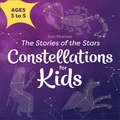
Constellations for Kids: The Stories of the Stars
By Ann Pearson. 2022
With this constellation book, kids will learn some of the most famous myths and legends connected to the stars. It's…
full of amazing kids' stories that explore everything from the Big Dipper to the adventures of Hercules!People have always looked up at the stars and seen shapes—and created stories about them. In this book for kids 3-5, you can discover constellations and the stories of how they came to be.Blast off into this star book:See into the sky—Bring the constellations to life with illustrations and sky maps that will get kids excited about each new story.Astronomy for kids—Explore where and when to see each constellation in the sky, with tips to help kids (and adults) spot them Name the stars— Did you know that the constellation Cancer symbolizes a giant crab? Or that Aries represents a ram with wings?Show little ones the incredible mythology above their heads with this toddler-friendly introduction to the stories of the constellations!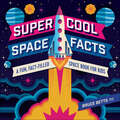
Super Cool Space Facts: A Fun, Fact-Filled Space Book for Kids
By Bruce Betts. 2019
Discover a universe of fun and amazing facts about space for kids 6 to 9 Take an exciting, fact-filled journey…
that goes where all great space books for kids should—to our solar system and beyond! Super Cool Space Facts is bursting with info about stormy planets, exploding stars, weird black holes, amazing landers, and more.Blast past other space books for kids with:Galaxies of wonder—Launch into learning with awesome and easy-to-digest facts about everything from asteroids hurtling through space to astronauts on the International Space Station.Entertaining information—Fill your outer space adventure with the jokes, big word alerts, and fascinating mysteries of the universe all space books for kids should have.Full-color photos—See how cool space is with incredible pictures of stars, galaxies, planets, constellations, and more.Super Cool Space Facts brings you out-of-this-world fun—and a must have title for anyone interested in space books for kids.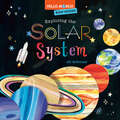
Hello, World! Kids' Guides: Exploring the Solar System (Hello, World!)
By Jill McDonald. 2022
The best-selling Hello, World! board book series expands into picture books, for Hello, World! kids who are ready for the next…
step.Kids who enjoy looking up at space and dreaming of exploring the solar system will love this lively, fact-filled, illustrated tour of our galaxy, with engaging information on every page: • Fascinating details about each of the planets, including up-to-date information such as NASA's Perseverance rover and Ingenuity helicopter—accompanied by bright illustrations. • Statistics about each planet, with information about the planet's size, distance from the sun, length of days and years, and more. • A helpful chart that shows each planet's place in the solar system. • A question that asks the reader to think about the planets in relation to themselves, such as "Would you like to live on a planet with a long winter or a short winter?" and "What would you bring on your Mars rover?" Hello, World! readers who have moved up to picture books and any kids who love science and space will find many captivating hours of learning and inspiration in the launch of this exciting new series.